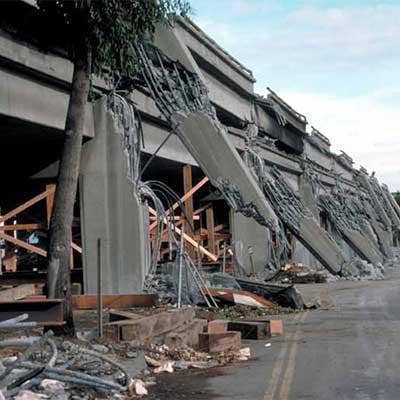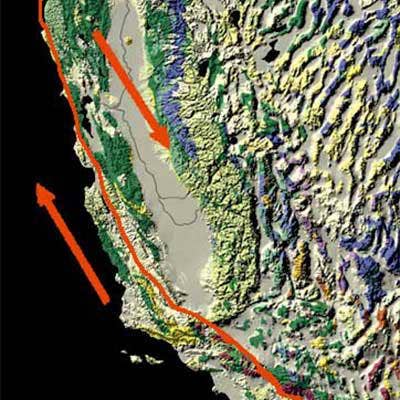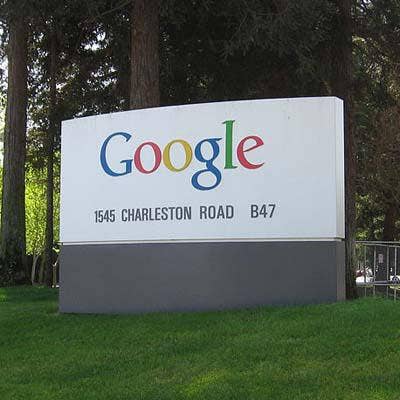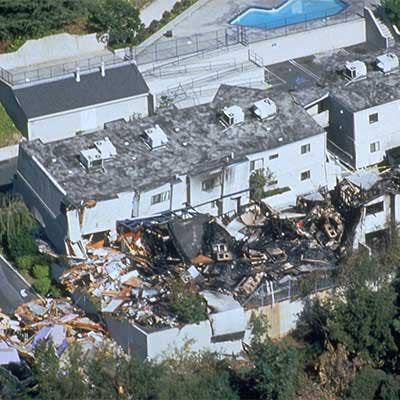Silicon Valley: One Earthquake Away From IT Disaster?

Potential IT Disruption Is Close To Home
Sometimes, it seems as if the IT industry and its supply chain is just one step away from a disaster.
Whether it's a flood in Thailand, a tsunami in Japan, or a worldwide flu pandemic, one of any number of different types of disasters brings with it the risk of breaking the supply chain.
However, one of the biggest potential IT disruptions lies closer to home: a massive earthquake along the San Andreas fault or another fault running under the San Francisco and Silicon Valley area.
Yes, it's true there are other earthquake-prone areas of the world including Japan and Taiwan where quakes have disrupted the IT supply chain. But only in Silicon Valley, home to companies such as Apple, Google, Hewlett-Packard and Intel, is there such a high concentration of IT talent and intellectual property.

The Fear: A Major Quake Could Damage Silicon Valley
California, because of its unique position straddling two of the earth's major tectonic plates, is subject to a constant barrage of earthquakes as the two plates move slowly against each other. Most quakes are not even felt, and few cause noticeable damage.
However, the 800-plus-mile underground crack in the earth known as the San Andreas fault runs under San Francisco and just to the east of Los Angeles. This provides the ever-present chance of a catastrophic earthquake that could severely damage Silicon Valley, the heart of the world's IT industry, or cripple the ports of Los Angeles and Long Beach and shut of for some time the main entry point for IT equipment from Asia.

The Hype: What Will Not Happen With The ’Big One’
Hollywood and its cousins such as the Syfy channel have used the idea of a massive earthquake along the San Andreas fault to overly dramatic, sometimes to the point of comedic, effect.
The 2015 movie "San Andreas," staring Dwayne Johnson, is the latest example. As noted by USA Today on May 28, the movie took more than a few liberties. Lucy Johnson, a seismologist with the U.S. Geological Survey, told the news site that:
The movie featured magnitude 9.6 and 9.1 quakes, when in reality the San Andreas fault could only create a maximum 8.3 quake.
The quake in the movie created a tsunami, but that would require the quake to be centered at sea, which would not happen on the San Andreas fault line.
Unlike in the movie, earthquakes cannot be predicted. Earthquakes cause buildings to collapse, not explode.

The Reality: A Question Of When, Not If
The U.S. Geological Survey this year upped its estimation of the likelihood that a massive magnitude 8.0 quake would hit the state within the next 30 years to 7.0 percent vs. the previous estimate of 4.7 percent.
In Southern California, major earthquakes historically happen every 110 to 140 years, but the last big one occurred in 1857, or 158 years ago. Such a quake, according to the Smithsonian, would lead to the collapse of older buildings; the severing of roads, water mains and power lines; large fires; and a lot of dangerous aftershocks.

The ’So What?’ Factor: California Shrugged
Californians in general, and the IT industry in particular, do not obsess over the possibility of a major quake. The state saw its population grow by about 4 percent between 2010 and 2014, according to the U.S. Census Bureau. Meanwhile, Silicon Valley's population grew about 1.3 percent between July 2013 and July 2014, according to SFgate. While that was not a high growth rate compared with many other parts of the U.S., it was likely held back by a no-growth feeling in the San Francisco Bay area and the area's fast-growing cost of housing.

The Second ’So What?’ Factor: California IT Firms Shrugged
The IT industry's top companies have made Silicon Valley their home. In a list assembled by the San Jose Mercury News, IT companies with headquarters in the San Francisco and Silicon Valley areas include, among others:
-- Consumer electronics giants Apple and GoPro
-- Software companies Adobe Systems, Oracle, Symantec and VMware
-- Hardware vendors Hewlett-Packard, NetApp and Sanmina-SCI
-- Networking vendors Brocade Communications, Cisco Systems, Juniper Networks, Netgear and Palo Alto Networks
-- Chip makers AMD, Altera, Intel, Fairchild Semiconductor and Linear Technology
-- Web giants Google and Yahoo

What Could Be Expected From The ’Big One’
Should a massive quake hit the San Andreas fault or the multitude of smaller faults running under Silicon Valley, possible impacts include:
-- Building damage, ranging from minor to possibly catastrophic, although tough seismic standards make newer buildings less likely to sustain major damage than even in the recent past.
-- Highway and local road damage that could disrupt employee commutes, first-responder services, and delivery of essential supplies.
-- Disruption of water and electricity. For many companies, electricity disruptions could be mitigated with generators, depending on fuel reserves for short-term operation and availability of fuel deliveries for long-term operation.
-- Disruption of communications, including wireless tower damage or cut phone lines and fiber cables.